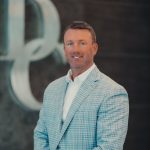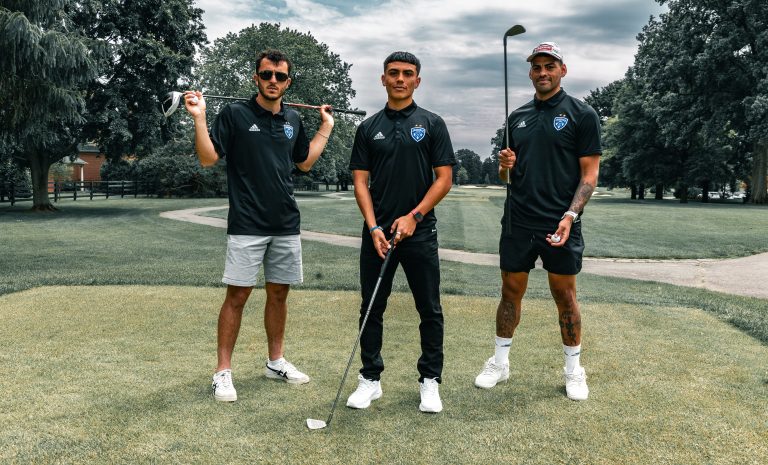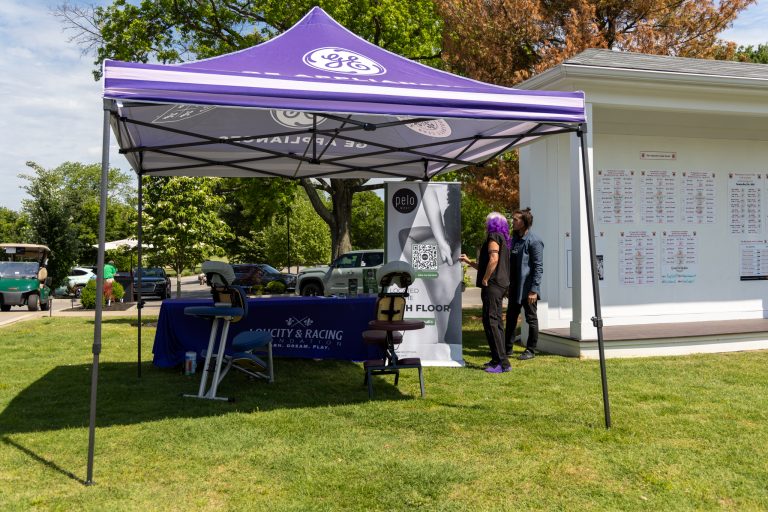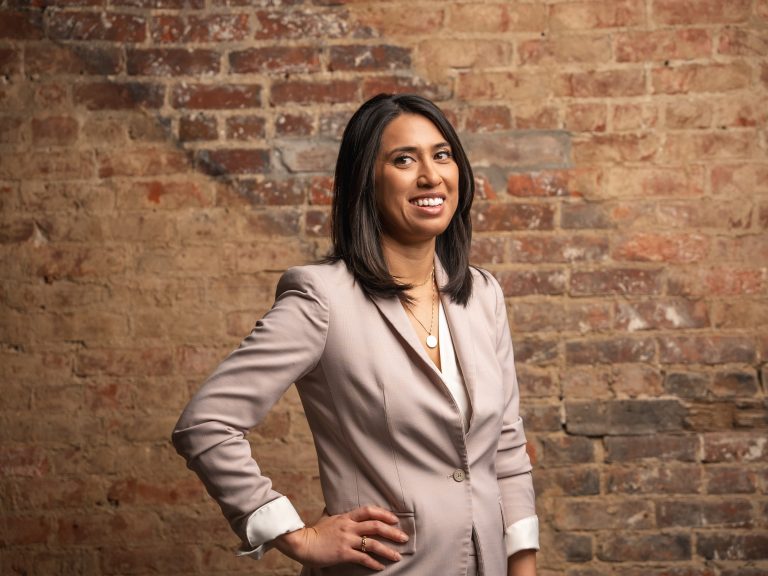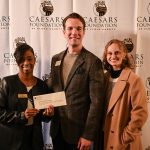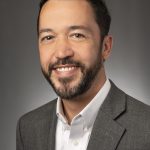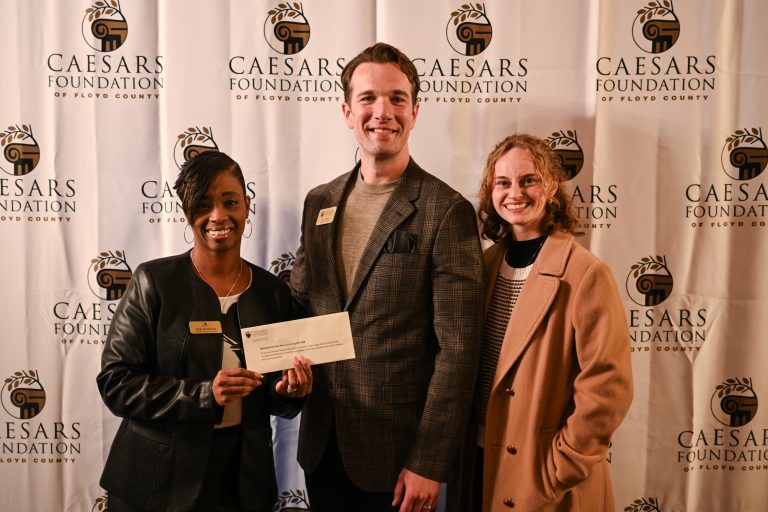
Marc Salzman is a Louisville cosmetic surgeon whose life “transformations” go beyond pretty and vain.
By Steve Kaufman | Photos by Antonio Pantoja
Dr. Marc Salzman discovered early on in his career that one of the rewards of being a physician is saving lives, either through diagnosis or treatment or surgery.
And he acknowledges that, in choosing to pursue a career in cosmetic surgery, he has mostly given up the life-saving part of the physician’s reward.
“I always say, ‘I do the kinds of surgeries my patients want, but no one needs,’ ” says Salzman, who maintains a cosmetic surgery practice in Eastern Jefferson County in Kentucky, which will be easily accessible once the East End Bridge opens later this year. “A general surgeon does exactly the opposite: Nobody wants that colon section removed, but they need to. Nobody wants that open heart surgery, but they need it.”
But that doesn’t mean he sees cosmetic surgery as frivolous and vanity-driven.
Just the opposite, he says. “In cosmetic surgery, we fix people’s mindsets about physical ailments that are crippling them mentally, even though there’s often nothing physically wrong. What we do is, in the best cases, transformative. We change people’s lives.”
How do his patients feel about that?
“Dr. Salzman changed my life completely,” says Reed Jordan Van Inwegen, who owns an organic spray tan salon on Brownsboro Road in Crescent Hill. “I take my steps with confidence because of him. He gave me Reed again.”
“It’s hard to express what a difference Dr. Salzman has made in my life,” says Iris Donahue, an employee trainer for a national restaurant chain in New Haven, Ky. “My life is 1,000 times better. I don’t worry anymore that my appearance is the first thing people are going to judge me on.”
Restore vs. Maintain
Salzman sees his practice as divided between “restorative” and “maintenance.”
“Maintenance,” he says, “is the 40-something-year-old woman who has always been proud of her body. But after three kids, she looks down and sees a different body, and asks, ‘How did I deserve this?’
“If she was always pretty, and ‘pretty’ was her calling card, then she feels that age has cost her that perceived edge. So we do a face lift, or a breast lift, or a tummy tuck, and make her look the way she looked before.
“It’s pleasant. But it’s not transforming.”
Restorative, he says, is the teenage girl just forming breasts who is disturbed because one breast has developed more than the other.
“She’s embarrassed,” he says, “it occupies her mind when she has to change clothes in front of her peers or when she goes to buy clothes.”
Or the young boy with floppy ears who gets unmercifully teased. “So one summer we fix his ears, and he never gets teased again.”
Or the flat-chested girl going off to college. “She feels unfeminine, plus it’s hard for her to find clothing, always looking for things to disguise her flat-chestedness,” he says. “Perhaps she’s shy, unconfident, withdrawn. The same girl with breast implants is confident, feels feminine, is a different person.”
That, he says, is more transformative than restorative. “Can you live your whole life being flat-chested? Of course. Can a kid with floppy ears grow up to be president of the United States? Apparently!”
However, even the breast-lift patients say they feel transformed.
“I feel feminine again,” says Van Inwegen (see sidebar), who had a breast lift after spending six of her 46 years breast-feeding her three infant children. “And I wanted my daughters to see that you don’t have to sacrifice who you are by giving birth and breastfeeding.”
Thinking? Or Doing?
Salzman grew up the son of a Miami physician and went off to the University of Florida as a chemistry major on a pre-med track. At Tulane Medical School, he faced the decision all med students have to face:
Are you more inclined to do things with your hands or with your mind?
“Those are two totally different things,” Salzman says. “Medicine is more about thinking and analyzing. You diagnose, someone else implements. With surgery, you’re the person who does it after someone else has figured it out. I liked the doing.”
Leaning towards gastrointestinal surgery, Salzman entered the residency program at Mt. Sinai Hospital in New York. But after five years of general surgery, he decided he didn’t like dealing with hopelessly sick GI patients suffering from something incurable, like Crohn’s Disease.
“I preferred the technical part of surgery,” he says. “You fix it!” That left two things for him, orthopedic or plastic surgery.
“I spent a month in plastic surgery and said, ‘This is for me.’ It’s clean, not a lot of blood loss, the patients are healthy, the interaction is fun.”
What wasn’t fun was choosing to go through an eight-year residency “to be a real plastic surgeon.”
“It takes a minimum of five years of residency in a surgical discipline, usually general surgery, plus an extra three years in plastic surgery,” he explains. “Some docs don’t want to do an eight-year residency. They do the three years of general surgery and, in most states, they can become a board- certified cosmetic surgeon and perform the same procedures in their office that I do. But they don’t have the training and expertise that I have.”
Salzman is certified by both the American Board of General Surgery and the American Board of Plastic Surgery. He’s also licensed in both Kentucky and Indiana. “If anyone could get a surgical certification and then open up a cosmetic spa, then I’m the biggest idiot on the planet for putting in those eight years,” he says.

Welcome to Louisville
During his plastic surgery residency at Duke University Hospital, Salzman came to Louisville for a hand fellowship with Dr. Kleinert Kutz. While working at Jewish Hospital, he spent some time with Dr. Norman Cole, at the time the president of the American Society of Plastic Surgery.
“When it was time for my next career move, I asked Norman for advice,” says Salzman. “Who better to ask than the president of our society? And he said, ‘Marc, Louisville needs a good plastic surgeon. Why don’t you come join me?’ So I came here, in 1992.”
At the time, most Louisville plastic surgeons split their practice in half, between plastic surgery and cosmetic surgery. “No one in Louisville was doing just cosmetic surgery,” he says.
“That’s what I decided to do.”
Surgeon and Counselor
What did Salzman learn from working with the national president of plastic surgeons? “I learned how you get the patient to the operating room. What you do during the consultation to enlighten the patients, make them comfortable. Norman was very good at explaining things in a way patients could understand.”
Interestingly, this is what patients we talked to said they liked about Marc Salzman – as much as, if not more than, the “artwork” on the wall from Tulane, Mt. Sinai and Duke or the various medical specialty boards.
“When I walked into his office, it was almost like they were all my old friends,” says Reed Van Inwegen. “It was comfortable and professional.”
She also liked Salzman’s demeanor, “assuring me he knew exactly what he was doing. There was never a concern, never a question.”
Another doctor she saw was “abrasive.”
“He looked at me and actually said, ‘Yes, you have severe sagging.’ I knew that, of course – that’s why I was there – but the way he said it only further attacked my self-esteem.” Iris Donahue, who was seeking to get rid of flabby skin after a tremendous weight loss, had a similar reaction. “From the moment I walked in, the staff was amazing,” she says. “Dr. Salzman examined me and talked to me, leisurely and patiently, without rushing me.
“He talked about me, the person, individualizing my needs, focusing on what was important to me, not about what it would cost or when he could fit my surgery into his busy schedule.”
Choosing a Surgeon
“I would never let anyone in my family consider anyone other than Dr. Salzman,” Van Inwegen insists.
That kind of word-of-mouth is the life’s blood of a cosmetic surgery practice. There are rarely referrals from primary care physicians, and without health insurance participation, he’s not on any PPO lists.
What has changed in the 25 years he’s been in practice is the gossipy grapevine of Internet chatter.
“In the last 10 years, the Internet has become the best word-of- mouth,” Salzman says. “It’s how patients research, find and choose cosmetic surgeons.”
That certainly contributed to Donahue’s choice. “I did some research online,” she says, “and I was immediately uncomfortable with reviews I’d seen for some surgeons. I understand how online reviews work, you mostly hear from dissatisfied customers. But when I didn’t see anything positive for some doctors, that was worrisome.”
Van Inwegen had an entirely different – and unique – way of choosing Salzman. “In my spray tan business, I see lots of different unclothed bodies in front of me,” she says. “I can see good breastwork and bad breastwork. And I learned which ones were Dr. Salzman’s patients. That was the doctor I wanted working on me.”

Reed Jordan Van Inwegen
“I’d lost sense of who I was.”
Reed Jordan Van Inwegen was 46, mother of three, a veteran of six years of breastfeeding. She had what she says were “severely sagging breasts.” But hers was not purely a quest for vanity. The one-time model was troubled by self-consciousness and a growing lack of confidence.
“I’d lost a sense of who I was,” she says. “I felt like my husband’s wife or my children’s mother. I hadn’t felt like Reed in a long time.”
She also felt like a spotlight was following her. “Whenever I went out, if someone turned and looked at me, I wondered if they were looking at me because something was wrong.”
In addition, complications from a biopsy had caused one of her breasts to partially collapse, leaving a kind of “divot” that made it difficult for her to find bras that fit.
Her lack of “feeling feminine” was exacerbated by what she did on a daily basis. “Every day, I spray many different body types,” she says of her salon, Glow Organic Spray Tan (2911 Brownsboro Road), “and women do this ‘self-shaming’ thing. Most of them apologize to me for their cellulite, saggy breasts and stretch marks because of breast-feeding – real self sabotaging behavior.”
She says she reassures them that “I think you’re amazing, you’ve created these lives. I was saying to them exactly what I knew I should be saying to myself,” she says, “but I wasn’t reflecting my own words. I felt like a hypocrite. I needed to change something.”
But she was also realistic and grounded. “I’m a mother of a 21-year-old girl, I didn’t want to walk out looking fake, like a 46-year-old woman trying to look like someone in her 20s. I just wanted a better version of me.”
She was taken by Salzman’s reassuring behavior. “I asked him if he could cure the deformity in my one breast,” she says. “He said he’d do his best. Confident, but not over-promising.” Also, she says, honest.
“I said I wanted to have a breast lift and implants. He said he disagreed about the implants. That sold me on him. It was costing him money, but he was doing what was best for me.”

Iris Donahue
“My weight loss had made me miserable.”
In 10 months during 2013, Iris Donahue lost 95 pounds.
Always overweight (“I weighed 220 pounds when I graduated from high school”), the 41-year-old corporate trainer should have felt wonderful.
But she didn’t. The weight loss had left her with folds of extra skin on her abdomen and hanging from her upper arms.
“It was uncomfortable, almost more uncomfortable than I’d been before I lost the weight,” she says. “The skin chafed and rubbed, and hurt when I ran. I developed rashes. It played with my mental state.
“Here I’d done all this work, lost all this weight, and I wasn’t feeling any better about myself.”
She says Salzman put her immediately at ease, explaining what her options were – and were not.
“He said I wouldn’t get rid of this through exercise,” she says. “He said, ‘You can lift weights all day, do as many crunches as you want, this is just skin and there’s nothing you can do. You’ve done your work. Now let someone else help you.’
“He talked to me as a person, individualized my needs, focused on that which was important to me. He made it clear what needed to be done and what he would do. It was all about helping me, the patient. I didn’t think I could find that anywhere else.”
The five-hour procedure was called an “extended tummy tuck.” “Three large babies had extended my abdomen,” she explains. “Dr. Salzman had to sew my abdomen back to where it was supposed to be, moving muscles and skin.”
She says she lost weight so she could be around for her children and grandchildren, and to encourage them to think about a healthy lifestyle. Now, she says, she can play tennis with her daughter or run 15 miles without the pain of the extra skin, or having to run in a long-sleeve shirt in the heat just to cover up her arms.
She was so happy about her procedure that she was even proud of her scars. She proclaims, “They tell my story!” But apparently not too loudly. She recently had an MRI and mentioned to the nurse that she’d had skin-removal surgery.
“Really?” said the healthcare professional. “But where are your scars? I don’t see any.”
Reaching Marc Salzman
Salzman Cosmetic Surgery & Spa | 4702 Chamberlain Lane | Louisville, KY 40241 | 502.425.5200 | www.itbecomesyou.com
Among Dr. Marc Salzman’s most common procedures are breast augmentation, revisional breast surgery, liposuction and facial surgery (facelifts, eyelids, noses and ears).
He has about $2 million worth of equipment for laser resurfacing, tattoo removal, laser hair removal and treatment of leg and facial veins, as well as non-invasive technologies for fat-reduction and radio-frequency devices for skin tightening.
“We’re not entirely there yet, but already 80 percent of the growth in cosmetic surgery is in non-surgical, minimally invasive techniques,” Salzman says. “But pushing the button on the laser and aiming it in the right direction is not the skill of doing laser surgery. The skill is choosing which laser for which problem, how many times and at what levels.”





